In this post, we will discuss how to set up a high-quality home studio at an affordable cost, with all the features you may need. In the past, it used to be extremely expensive to establish a studio, but today, thanks to digital audio technology, it has become more accessible.
This guide will assist you in creating your own home studio, while achieving excellent sound quality in your musical projects. We will suggest specific products that provide good value for the cost, however, it is important to note that these are only recommendations. The ideal components for any home studio vary depending on various factors, thus, you will have to decide what is best for your specific projects.
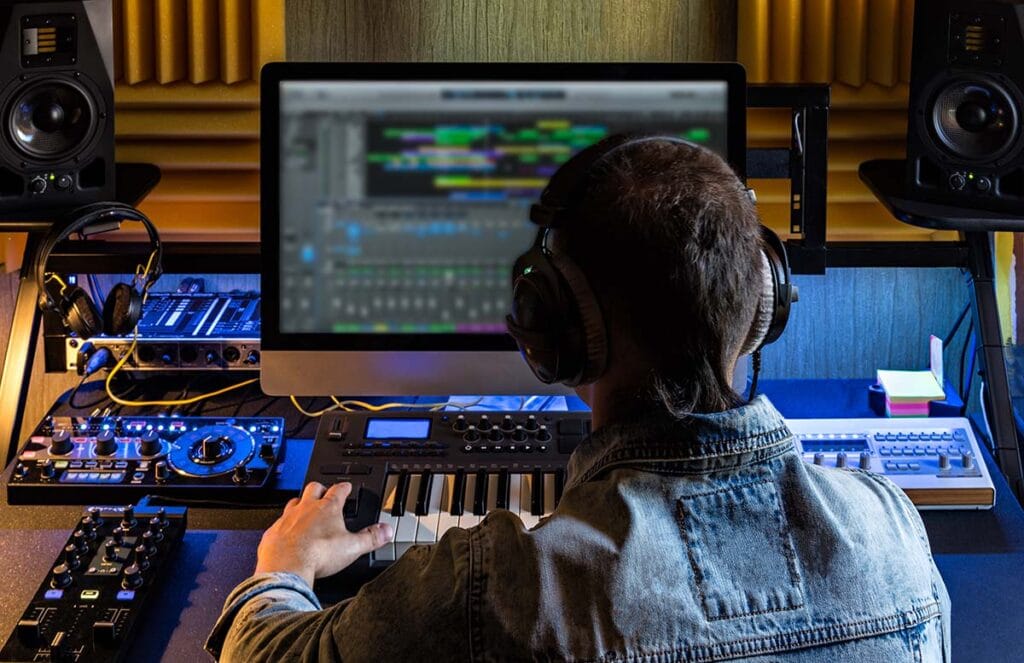
What are the most important elements for a home studio?
Acoustics
Let’s begin with some basic considerations about room acoustics. The acoustics of a home studio differ greatly from those of a professional studio. While we may not be able to soundproof the room completely or create perfect conditions, we do have some recommendations to keep in mind.
Generally, you need to treat the rooms of a recording studio acoustically in two ways:
Acoustic isolation: This involves reducing the sound that enters or exits the studio. This is important not only to prevent your neighbors from hearing your music at full volume, but also to prevent outside noise from interfering with your recordings. However, this type of room treatment can be extremely expensive (it often requires building one room within another), so it may not be worth it for home studios.
Acoustic treatment: This is done to improve the acoustics within the studio for better recordings, mixing and mastering. To achieve this, acoustic absorbers and reflectors are used. The ultimate goal is to only use the direct listening/recording sound without the reflected sound, to achieve the most transparent sound possible when recording/listening.
I have an old post on my Instagram profile where you can see how I have treated the acoustics in my own studio.
Computer
The high-performance computer, it’s also important to consider the operating system you’ll be using for your home studio. One popular option is a Mac, which is known for its stability and user-friendly interface. Many music production software such as Logic Pro X, Ableton Live, and Pro Tools are compatible with Macs, which makes it an ideal option for music production. Macs also have a reputation for good performance and durability, which is an important factor to consider when it comes to music production, as it can be a resource-intensive process. Macs also have a large number of music production software options and plugins that can be used with them. It’s also worth mentioning that Macs are also more expensive than Windows computers, so it’s important to consider your budget and determine if it’s worth the cost for your needs. Overall, Macs are a great option for music production, especially if you are already familiar with the operating system and have access to the software you need.
DAW
Today, everyone who wants to produce music digitally needs a digital audio workstation. Here we have made a comparison of the 12 most popular DAWs on the market to help you choose your first workstation.
But to sum this up very briefly: It doesn’t matter which DAW you decide for, because at this point all DAWs can do everything. But here are 3 suggestions for 3 different application areas:
- If you want to produce hip-hop music (ie create beats), FL Studio is very suitable for it.
- If you want to produce electronic music, I recommend Ableton Live.
- If you prefer mixing and Mastering Pro Tools and Logic Pro are well suited for this.
Monitors/Headphones
Monitors are an essential element in a home studio. Ideally, they should have a flat frequency response that doesn’t color the bass and treble. This means that the listening frequency is a straight line (actually, frequency curves in studios are never straight, but you know what I mean) with nothing sticking out. The result is an objective and consistent mix when played on different devices.
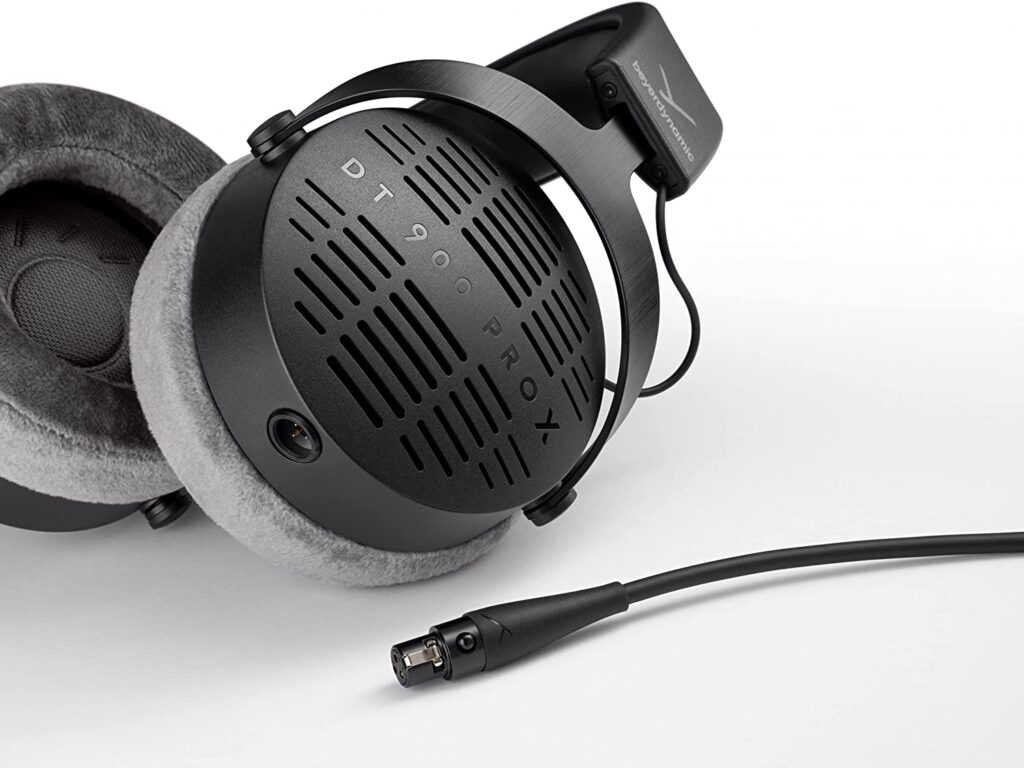
If we do a mix with very bass-heavy monitors, there is a good chance that the mix will have very little bass when heard on another device. All monitors have nuances in different frequencies, here the tastes and needs of each one influence.
To create a stereo monitoring system in our home studio, we need a pair of monitors and/or headphones. The choice of monitors depends on the size of the room in which we want to place them and the power we want to use. For a room of normal dimensions, five inches is best. Some of them are:
RCF Ayra 5, Yamaha HS5 or M-Audio BX5 D2 70w
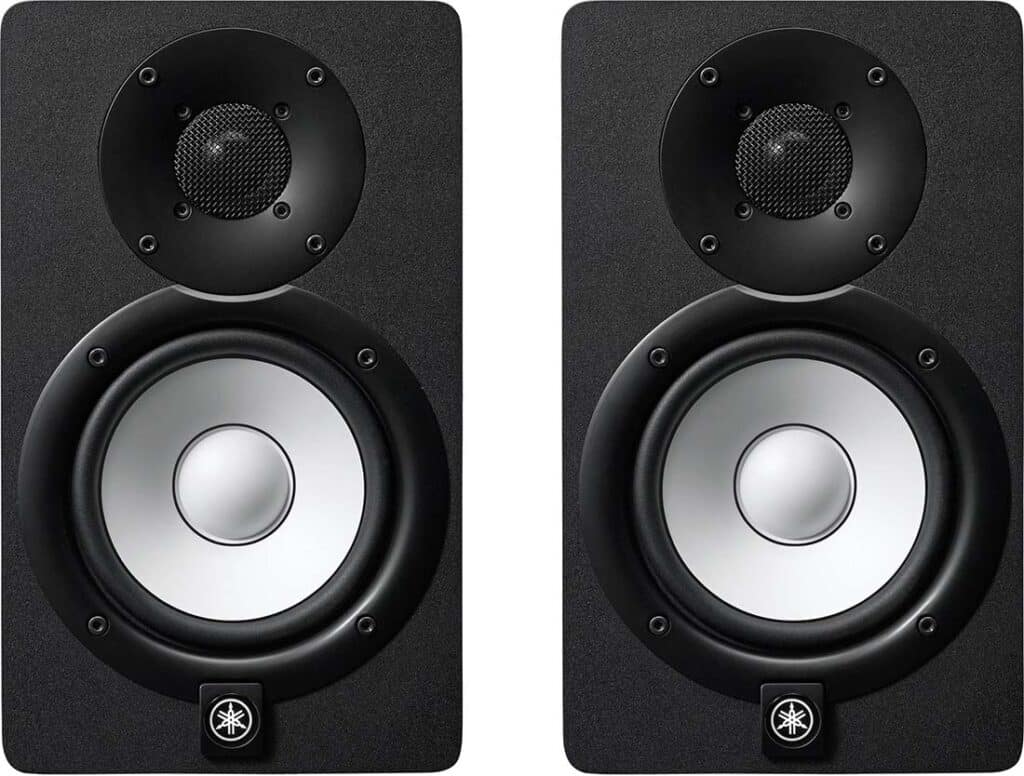
If you prefer the eight-inch ones:
The first are the Krk RP5 Rokit G3 monitors. At an affordable price, you get a high-quality pair of monitors in an exceptional design with their characteristic yellow membrane. It is a highly recommended option for its value for money.
For the rest, I can also recommend the Yamaha HS8, but they are a bit more expensive.
If you can’t afford monitors right now, or if your neighbors are annoyed by your monitors, you can also work with headphones. It is not ideal, but in the absence of monitors it can be a good solution. A good option is the Beyerdynamic DT-990, which are open headphones (open headphones have a more transparent sound than closed ones) with a good frequency response, perfect for a home studio. Although we have monitors, it is always good to have headphones to monitor in our home studio.
Monitors: Correct volume
To set up our studio at home, we will give you some tips to keep in mind:
- Do not place the monitors near walls or corners, as this will cause an imbalance in the low frequencies. If this is unavoidable, try reducing the bass on your monitors using an equalizer (most monitors have at least a 2-band EQ).
- The tweeters should be at the same height as your ears.
- The monitors should form an equilateral triangle with your position for a balanced stereo image.
- It is important to avoid bare walls, windows and smooth surfaces… The use of carpets, foam and elements that act as diffusers can help improve acoustics.
Furniture
Strictly speaking, you only need a desktop. The ideal is to place another shelf on the desk to create two heights. This makes it easy to put the monitors in the correct position and to handle all the accessories.
Some of the peripherals for a home studio come in a certain format to be installed in a rack, but it is not mandatory to install them in a rack so that we can have them on the table.
In the studio he uses his Fame W-201 from the Music Store, along with a Fame Rack on the right.
midi-keyboard
The midi keyboard is optional, it can offer you numerous possibilities, but it is not an essential element. The keyboard itself does not emit sound, but rather sends a series of midi commands that our software interprets with the sound of the virtual instrument that we choose. For music production, it is a highly recommended element and will help you a lot in your musical creations.
Our suggestions:
- Akai MPK: Akai offer with the MPK series a very good midi controller, which is very well suited to home studios. The model is available in different versions: With 25, 49, 61 or 88 keys. Each midi keyboard also has at least 8 drum pads. I use the 49-key version in my home studio.
- The second option is the Native Instruments Komplete Kontrol . This midi controller is a little more expensive, but more complete and offers a perfect integration with Native Instruments software.
audio interface
The interface allows you to connect your computer to any sound source, so you can record sound and send reference signals at the same time. This peripheral is one of the reasons we can now make high-quality recordings in our own home studio. There are numerous audio interfaces with different functions and, like everything, we need one or the other depending on our needs. To begin with, an interface with two channels is enough so that we can record two tracks simultaneously on different channels.
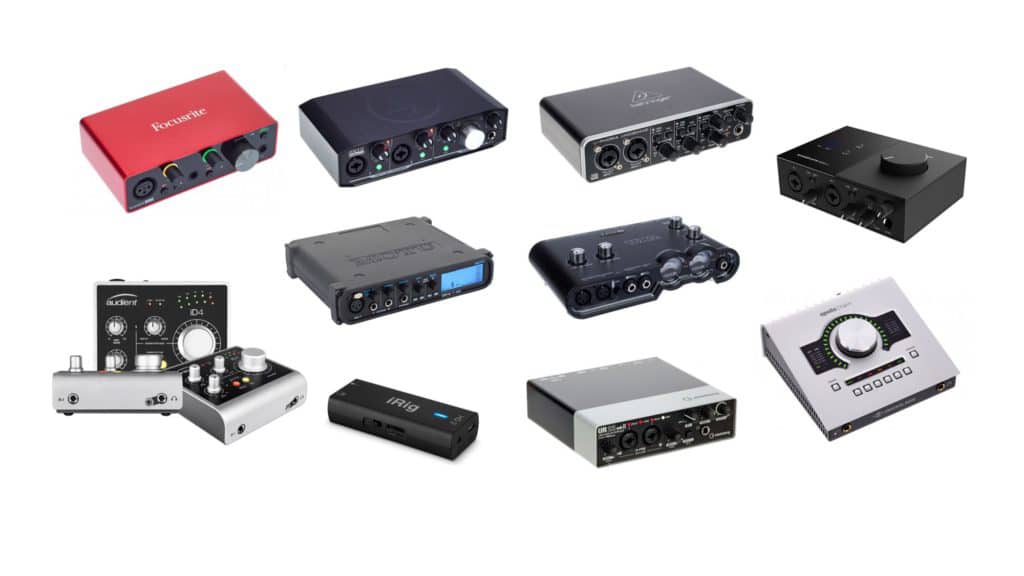
For starters, I always recommend Behringer’s UMC interfaces (I had the UMC204 myself). They are truly unbeatable in terms of value for money. Although the preamps are not the best, they are excellent for their price. In addition, they offer all the functions that an interface should offer, and that for only 79 euros.
But if you need something more complete, check out the interfaces from RME or Universal Audio.
microphones
Depending on the project, you will be interested in one type of microphone or another. There are millions of microphones for different purposes, but in a home studio, especially at the beginning, it is advisable to have a microphone that is versatile, has a good response and works well. Here you will find our comparative article on 8 of the most popular microphones for singers and rappers.
The most widely used microphone in home studios is the Rode NT1A. And for good reason: it offers super cool sound for little money. The sound is not far from more expensive microphones, such as the Neumann U87. However, good room acoustics are needed for condenser microphones.
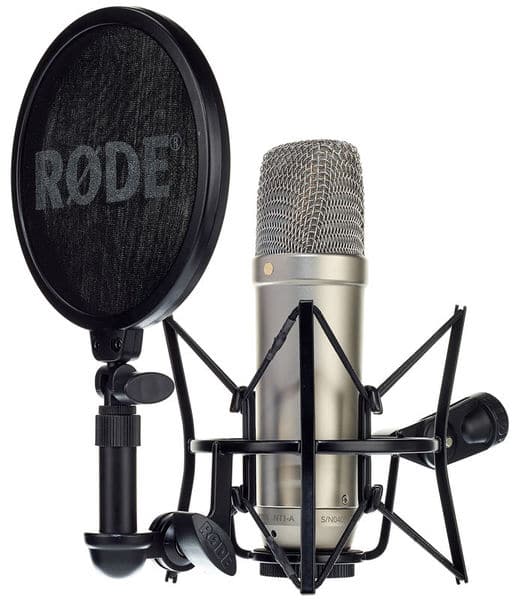
If you don’t have good room acoustics, it’s best to use a dynamic microphone because it picks up less ambient noise and more direct sound. The Shure SM7B is one of the best dynamic microphones available, but it doesn’t come cheap. The Shure SM58 or SM57 are also recommended for the home studio and are also much cheaper. In short, there are many ways to record with good quality. There are many microphones, you have to weigh which one you want to work with and choose it according to the purpose.
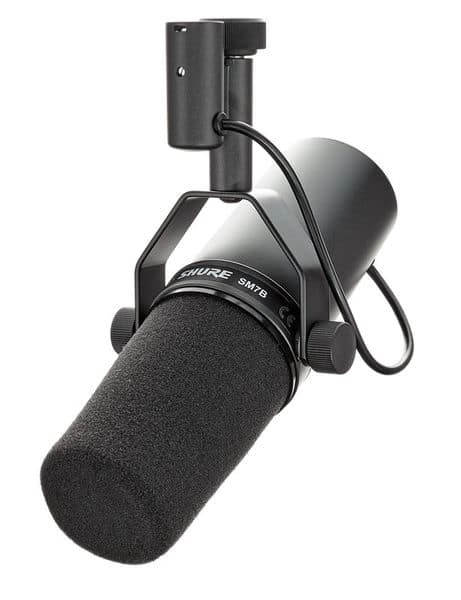
It is highly recommended to use a pop filter for our microphone. It’s cheap and the results are noticeable when recording vocals. The function of the antipop is to catch the saliva that can escape and to avoid the echo that is produced when we pronounce the “p” and the “s”. The end result is a cleaner sounding recording.
other accessories
Once we have these components, we can improve our Home Studio with different elements.
- Analog effects devices like equalizers and compressors are things you should consider when upgrading your home studio. Although both are virtually available in audio software, analog hardware often sounds better than digital plug-ins, but is more expensive and less practical.
- Many interfaces only have a headphone output. For this reason, if you record two voices, for example, it is advisable to send them separately so that you can listen to them individually. This requires a headphone amplifier such as the Berhinger HA-4000 with independent volume control for all four channels.
- Balanced wiring is recommended to reduce noise and interference.
We hope this guide will help you build your own home studio. And remember, first think about the projects you want to do, and then choose the components that best suit your needs and your budget.

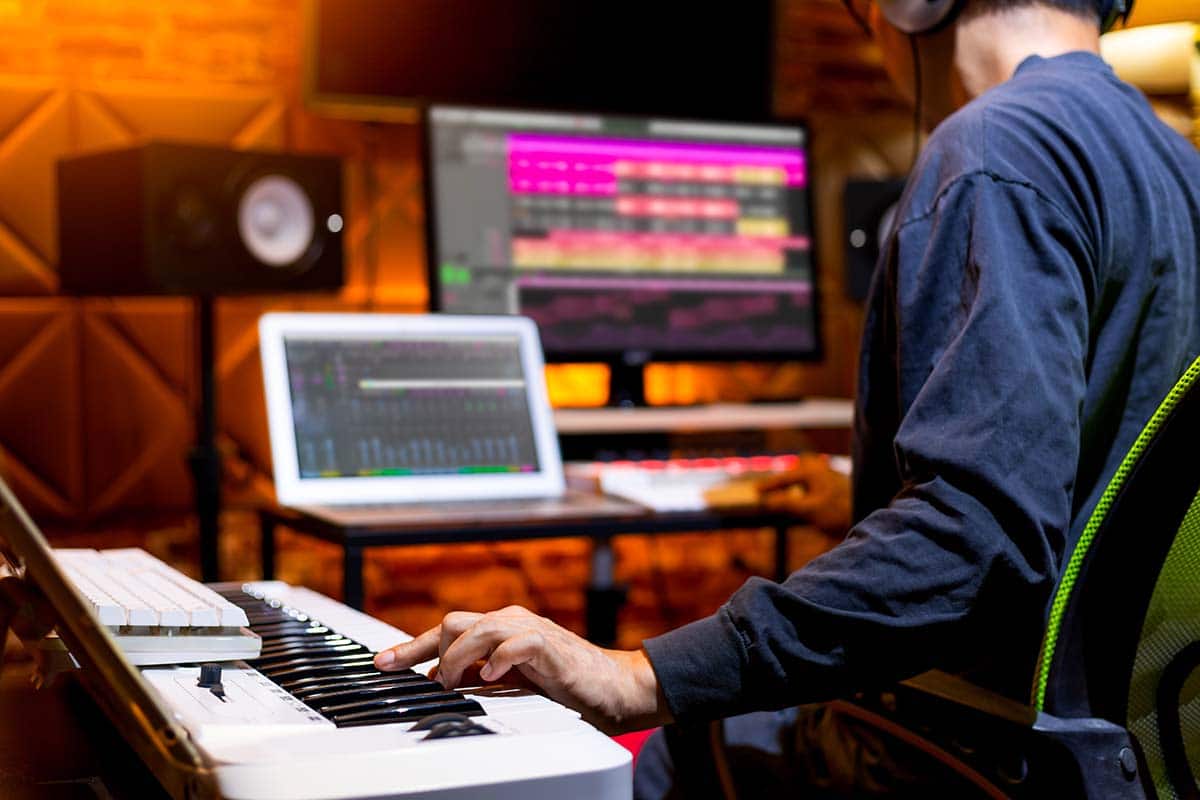
0 Comments